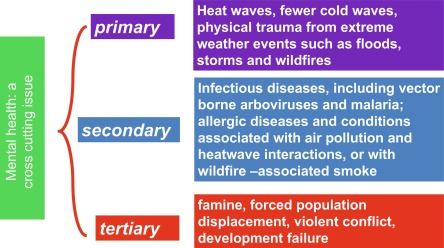Residents of Australia’s remote regions have lower life expectancies and poorer health outcomes than other Australians. Access to hospital and specialist care frequently requires transport via road or air and time spent away from family and community. The paper explores consumer perspective and identifies areas for improvement.
Global climate overshoot scenarios rely heavily on land-based carbon dioxide removal (CDR), but the IPCCs optimistic technical and economic potentials overlook the unquantified feasible potential shaped by socio-cultural, environmental, and institutional factors. This article proposes research frameworks to quantify this feasible potential, urging caution in using techno-economic CDR assessments for policymaking.
An overshoot of the 1.5°C target seems inevitable, prompting urgent calls for comprehensive, interdisciplinary, and globally coordinated solar geoengineering research. Drawing lessons from the CGIAR agricultural network, this article proposes a global network of climate action centers to ensure reliable and legitimate research, guiding policymakers and donors in addressing this critical need.
Climate change adaptation is urgent, yet understanding which strategies effectively reduce risks across varied climate conditions remains limited. By analyzing climate variability features and community responsesillustrated through an African case studythis review offers insights and methods to engage communities and inform policymakers for more effective adaptation support.
Human health, in the coming decades (and already in some “front-running” regions), is in peril. Although some authorities warn that over-stating such risks can induce paralysis and despair, under-stating them will not generate the intense action that is required. The impact of climate change on the Earth system is now so significant that the next ice age will likely be delayed by at least 50,000 years [201]. If humans do not rapidly change their collective behavior, then this may be their most enduring legacy. It is hoped that this chapter makes a small contribution to SDG3.
This content aligns with Goal 3: Good Health by exploring potential nutraceutical interventions for autism and related disorders, which can enhance therapeutic strategies and improve health outcomes for individuals affected by these conditions. By investigating the roles of various dietary and environmental factors, the study aims to provide a more nuanced understanding of autism's complex etiology, potentially leading to more effective management options. Additionally, it supports Goal 10: Reduced Inequalities by emphasizing the need for accessible and diverse treatment approaches, such as nutraceuticals, which can offer individuals and families more options for managing autism, regardless of their socioeconomic status or access to traditional healthcare resources.
Elsevier,
Symptomatic: The Symptom-Based Handbook for Ehlers-Danlos Syndromes and Hypermobility Spectrum Disorders, 2024, Pages 135-144
This content aligns with Goal 3: Good Health by exploring the systemic nature of attention-deficit hyperactivity disorder (ADHD) and its associations with other physical and mental health issues, emphasizing the need for comprehensive treatment approaches that address various underlying factors, including autonomic dysfunction and neuroinflammation. By proposing new targets for treatment, the chapter promotes a more holistic understanding of ADHD that can lead to improved health outcomes for affected individuals. Additionally, it supports Goal 10: Reduced Inequalities by highlighting the importance of recognizing and addressing the complex interplay of conditions that often accompany ADHD, ensuring that all individuals receive equitable and effective care tailored to their unique health needs, regardless of their background or circumstances.
This content aligns with Goal 3: Good Health and Wellbeing and Goal 9: Industry, Innovation, and Infrastructure by considering the neuroprotective properties of nutraceuticals such as soy, peanuts, and ginsenoside Rg1.
This article provides a comprehensive survey on fairness-aware recommender systems. As information filtering services, recommender systems have extremely enriched our daily life by providing personalized suggestions and facilitating people in decision-making, which makes them vital and indispensable to human society in the information era. However, as people become more dependent on them, recent studies show that recommender systems potentially own unintentional impacts on society and individuals because of their unfairness (e.g., gender discrimination in job recommendations).
This article investigates the dynamics of nutrients necessary to assist patients who struggle with oseoporatic fractures, which prove to be a major health problem for aging women. The information and approaches contained in this review seek to inform the public about ways that they can help improve their prognosis through safe and effective dietary modifications.

